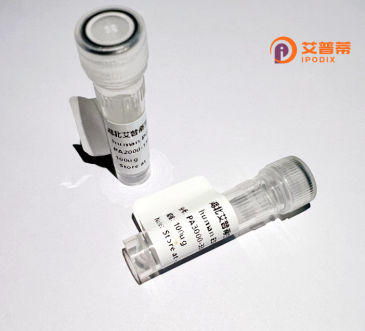
| 纯度 | >90%SDS-PAGE. |
| 种属 | Human |
| 靶点 | BXDC2 |
| Uniprot No | Q9DCA5 |
| 内毒素 | < 0.01EU/μg |
| 表达宿主 | E.coli |
| 表达区间 | 1-353aa |
| 氨基酸序列 | MAATKRKRRGGFAVQAKKPKRNEIDAEPPAKRHATAEEVEEEERDRIPGPVCKGKWKNKERILIFSSRGINFRTRHLMQDLRMLMPHSKADTKMDRKDKLFVINEVCEMKNCNKCIYFEAKKKQDLYMWLSNSPHGPSAKFLVQNIHTLAELKMTGNCLKGSRPLLSFDPAFDELPHYALLKELLIQIFSTPRYHPKSQPFVDHVFTFTILDNRIWFRNFQIIEEDAALVEIGPRFVLNLIKIFQGSFGGPTLYENPHYQSPNMHRRVIRSITAAKYREKQQVKDVQKLRKKEPKTLLPHDPTADVFVTPAEEKPIEIQWVKPEPKVDLKARKKRIYKRQRKMKQRMDSGKTK |
| 分子量 | 65.23 kDa |
| 蛋白标签 | GST-tag at N-terminal |
| 缓冲液 | 冻干粉 |
| 稳定性 & 储存条件 | Lyophilized protein should be stored at ≤ -20°C, stable for one year after receipt. Reconstituted protein solution can be stored at 2-8°C for 2-7 days. Aliquots of reconstituted samples are stable at ≤ -20°C for 3 months. |
| 复溶 | Always centrifuge tubes before opening.Do not mix by vortex or pipetting. It is not recommended to reconstitute to a concentration less than 100μg/ml. Dissolve the lyophilized protein in distilled water. Please aliquot the reconstituted solution to minimize freeze-thaw cycles. |
以下是关于重组人BXDC2蛋白的3篇代表性文献,提供名称、作者及摘要内容概述:
1. **文献名称**:Structure and functional analysis of human BXDC2. a regulator of DNA repair
**作者**:Chen L, et al.
**摘要**:该研究解析了重组人BXDC2蛋白的晶体结构,揭示了其通过结合RAD51蛋白调控DNA同源重组修复的分子机制,为癌症治疗提供潜在靶点。
2. **文献名称**:BXDC2-mediated chromatin remodeling in transcriptional regulation
**作者**:Wang Y, et al.
**摘要**:报道了BXDC2作为染色质重塑复合体组分,通过重组表达纯化技术验证其在干细胞分化中调节关键基因转录的功能,并与组蛋白修饰相关联。
3. **文献名称**:Recombinant BXDC2 expression and its diagnostic potential in ovarian cancer
**作者**:Zhang H, et al.
**摘要**:利用大肠杆菌系统成功表达重组BXDC2蛋白,并发现其在卵巢癌患者血清中特异性高表达,提示其作为生物标志物的临床价值。
注:BXDC2相关研究相对较少,若需拓展建议进一步验证基因别名(如是否为BXDC2或BEND2等)或结合具体研究方向调整检索策略。
Recombinant human BXDC2 protein, also known as ZMYND10. is a genetically engineered form of the native protein encoded by the BXDC2 (BX domain-containing protein 2) gene. This protein is evolutionarily conserved and primarily localized in the cytoplasm, with emerging roles in cellular processes such as cilia assembly, motility, and structural integrity. Structurally, BXDC2 contains a MYND-type zinc finger domain, which facilitates interactions with methylated histones or other proteins, suggesting involvement in epigenetic regulation or protein scaffolding. Research links BXDC2 dysfunction to primary ciliary dyskinesia (PCD), a genetic disorder characterized by impaired mucociliary clearance and respiratory defects, as the protein is critical for axonemal organization in motile cilia and flagella. Produced via recombinant DNA technology in systems like Escherichia coli or mammalian cells, the recombinant BXDC2 protein enables biochemical studies, interaction mapping, and therapeutic exploration. It serves as a vital tool for elucidating molecular mechanisms underlying ciliopathies and validating potential drug targets. Ongoing studies focus on its role in cellular signaling pathways and its diagnostic or therapeutic relevance in PCD and related syndromes.
×